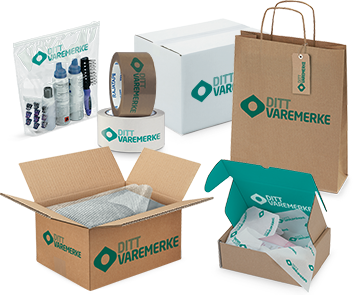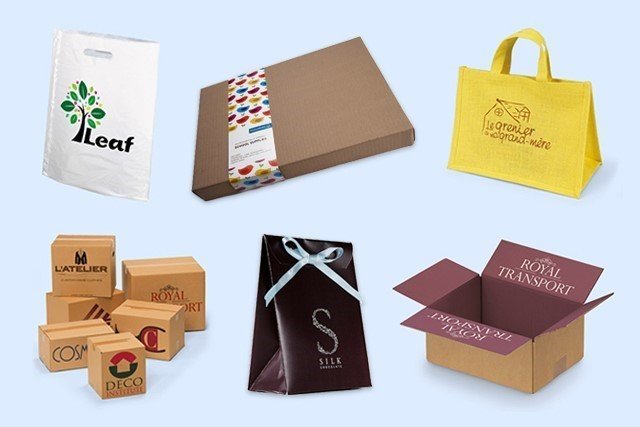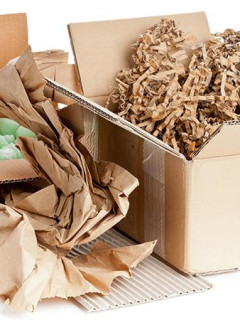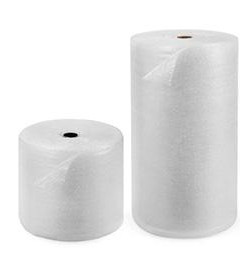Online shopping in Norway increased sharply in the year 2020. In total, Norwegians bought physical products online for a total of DKK 84.6 billion in 2020. This is almost a doubling from 2019, and there is no doubt that 2020 will be remembered as the year of home delivery (source: Nets e-commerce report 2020). At the same time, we see that online stores are getting better and competition is getting tougher as consumers get used to shopping online. So how can you make your online store more profitable? We have collected some tips ranging from digital marketing and designing your online store, to advice related to packaging and logistics
1. Focus your communication and marketing activities
The first goal of an online store is usually to increase traffic to the store. But to make e-commerce profitable, your website must first attract qualified visitors, i.e. visitors who are likely to buy your products. The key to achieving this is to target your communication and marketing activities very precisely..
- Choose the digital channels that work for your target audience. It doesn’t pay to spend time and money on overly broad communications if it just gets you unqualified visitors. So take the time to learn about the channels your target audience uses to find information and find products like yours.
- Test and learn. Start by spending small amounts on marketing in different digital channels, to test which channels and formats can work for your online business. Follow the results closely to get an insight into which channels are getting results.
- Surround yourself with specialists. Get a staff member or a good agency with knowledge of, for example, digital advertising or SEO. This will give you better results, and you’ll free up time to do what you’re good at.
2.Tilby en gjennomtenkt kundereise i din nettbutikk
Similar to a physical store, a web store must offer a good customer experience to visitors. This is necessary to convert visitors into customers, and is important to make e-commerce profitable. Here are some tips for creating a store with a good customer experience:
- Utarbeitungid produktktark för produktene dine, med fine billeder, détate Eigenschaften ved produktene dine, og gjerne uttalelser från fornøyde kunder. Ziel är å besøkende så mye nøkkelinformasjon.
- Make sales, delivery and return conditions easily accessible to your customers. Give customers the choice between several delivery methods if possible, e.g. either home delivery or click and collect from your warehouse or physical shop.
- Offer similar or complementary products before purchase to increase the average basket for your buyers. This can quickly give you extra turnover.
- Establish a process for customers who leave the shopping cart. These customers represent a large potential for profitability.
Remember to makeit easy for customers to return goods. For example, use packaging that can also be used to return goods, such as e-commerce bags with a double glue strip. Although a purchase may end in a return, this will help to keep customers coming back.
3. Work on the customer experience to retain customers
In an era of increased competition for customers, it is those online stores that have a good customer experience that will succeed in achieving profitability over time.
By working on the customer experience, you also work on customer loyalty, i.e. that customers come back regularly to order your products. And as you probably already know, it costs much less to keep existing customers than to acquire new ones. Think especially of …
- Have unique packaging designed to help build your brandit’s important to remember that packaging is often the key to the customer experience for an e-commerce customer. After all, this is the first point of physical contact between you and your customer. So why not customise your packaging to match the colours of the brand? Or make unboxing films of your products to share on social media?
- A simpler approach to packaging is to have neutral boxes, but use packaging tape and labels with your brand’s logoit can be enough to create awareness and strengthen your brand.
- Work on the user experience of your website. Do a user test by going through all the steps a typical customer in your online store does; what do customers experience from the moment they arrive at your store, right through to the end of the order?
- Set up your own communication with your existing customers. Customer experience is about creating a special experience for everyone who has ever bought from you. For example, why not have your own newsletters for different customer groups, offering discounts or extra benefits?

Packaging gives the customer an important first impression, so why not show off your brand?
4. Streamline internal routines to save time
Think about the internal routines you have in place from the moment an order is received until the parcel is delivered to the carrier. Can any of these routines be made more efficient, saving you time? Even small time savings can lead to lower labour costs and therefore increased profitability. Some simple measures could be:
- Have an efficient packing station where everything you need to pack an order is available. Have a neat and tidy packing station where everything you need is in its proper place, and where labels and packaging are ready for use.
Choose packaging that’s quick to pack, such as cardboard boxes with a vending machine base or e-commerce bags.
5. Optimise the volume weight of packages
From a logistics point of view, there are several ways to make e-commerce more profitable. One simple but effective tip is to optimise the volume weight of your parcels.
Volume weighting is a method of calculating the volume of a package as carriers do. When calculating volume weighting, the carrier transforms the volume of the package into “notional” weight, which takes into account the space the package takes in a truck or plane.
With the volume weight calculation method, a very dense parcel will be charged for the actual weight. A medium density parcel, which is very common in e-commerce, on the other hand, will be charged for the volume (and thus the volume weight).
You can read more about volume weight here.
Think also about…
- Is it always necessary to have the shortest possible delivery time? Do your customers really have to receive their parcels by express delivery? If the answer is no, you will be able to reduce transport costs significantly.
- Analyse your shipments by invoiced weight. By observing the different sizes and capacities of your shipments, and then classifying them by the weight ranges invoiced by your current carriers, you will be able to analyse the impact of the vacuum in your parcels.
- Review the range of packaging you use in your online store. If you can find packaging that provides lower volume weight, such as bags instead of boxes, this will reduce costs.
Reorganise the packaging in your warehouse. If you make changes to the packaging you use, it will also mean changes to the packaging process in your warehouse. Don’t forget to train your staff in the new process, to get the best possible packaging.
6. Go through your transport contracts
An important factor that contributes to increased profitability and is often forgotten is the transport of your products. Freight is often one of the biggest cost items for e-commerce businesses. By regularly reviewing your transport contracts and negotiating them better, you can make significant savings on your transport bill. Be careful that a better transport contract does not lead to a lower quality of your deliveries.

Please contact RAJA by phone 22 51 40 00 or post@rajapack.no if you want advice on how to optimise the packaging for your online shop.














